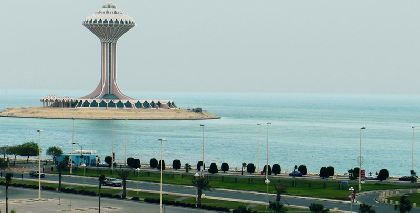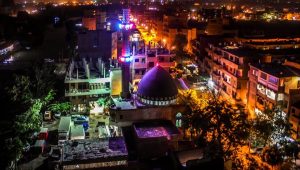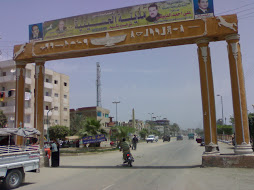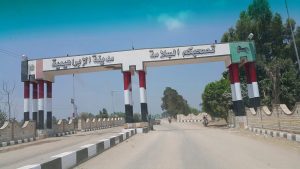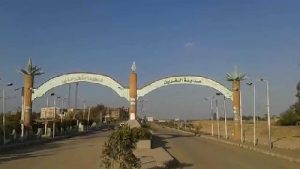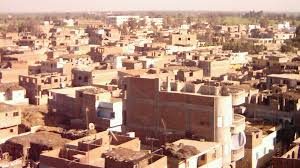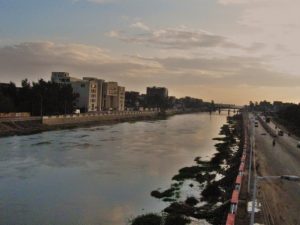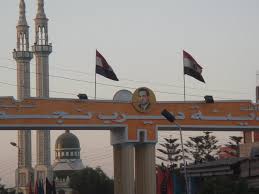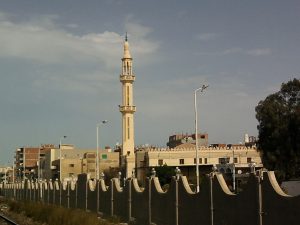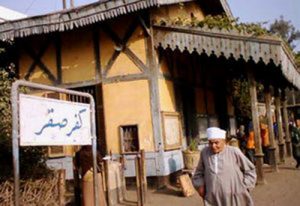Al Sharquyia Province in Egypt
Al Sharquiya is one of Egypt biggest governrates, It is situated in the east of the country surrounded by the governrates of Ismailia, dakahliya, cairo and Suez. It capital is zagazig City.
Menia El Qamh
Menia El Qamh is one of the major administrative centers on the way linking between Cairo and El Sharqiya Governorate. It is regarded as the western gateway to El Shaqiya and is bordered with El Dakahlia Governorate from the west, Banha center in El Qalyoubiya Governorate from the west, and Shebein El Kom from the south, and Zagazig City from the east. it is one of the major centers where most of the administrative institutes of the governorate are placed. The national day of Menia El Qamh is 16 march celebrating the great role of the people of the city in 1919 revolution. The main economic resources for the center are agriculture, trade and administrative services.
It is famous for producing large amounts of the traditional crops of rice, wheat and Cotton . Menia El Qamh is known for that name since it is believed to be the center of the stores that Prophet Josef used for storing wheat. It was a land of a great importance at the pharaonic era and there are numerous cities and towns whose name is derived from its name in ancient Egypt like ShalShalamoum which comprises of "Shalshal" means two temples and" Moun" which refers to Amoun. Menia El Qamh is one of the preferable destinations for Christians whether Egyptians of foreigners because it encloses El Malak Mekhael Church that is worth visiting for its religious value and its fascinating Coptic style of decoration.
El Husaineya
El Husaineya is one of the administrative centers in El Sharqiya Governorate in Egypt. In the ancient Egyptian times it was called Tall El Faraena and later on it was given its current name after Sultan Hussein II. It is bordered with El Dakahlia From the north, Ismailiya from the south, and Faqous from the west.
El Husaineya was once one of the important cities in ancient Egypt that encloses a large number of monuments and statues but most of it has been ruined by the passage of time. There are only remains of mud-brick walls dating back to the 11th Dynasty BC and some remains of Temples of Mut, Horus and Khonsu and others. Nowadays, El Husaineya encompasses a large number of smaller towns and cities and is renowned for raising and trading in Arab horses, in addition to agriculture and tourism.
Aby Hammad
Abu Hammad is one of the administrative centers of El Sharqiya Governorate. It is called after the name of Sheikh Amhed Abu Hammad who accompanied the Islamic Troops who came to spread Islam in Egypt and stayed in it till his death. On the land of ABu Hammad stand some remains of necropolises dating back to the Greco-Roman period. Abu Hammad center covers about 218km² and comprises of a number of small towns and villages. It is bordered from the south with Belbys Center and from the east with El Hessaneya. The major economic resources for the city are food industries, dairy products, clothing, petrochemical industries and agriculture. The city is famous for raising Arab horses and Fish farming as well.
Abu Kebir
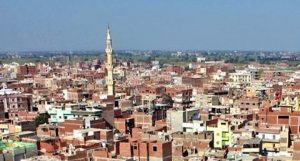 Abu Kabir is one of the administrative centers in El Sharqiya Governorate. It is called after the name of a famous poet in the tribe of hazil who was living in that area for a long period. It comprises of a large number of towns and villages and the main source of income for it is agriculture. On its lands, there are some archaeological sites such as Herbeit that was the capital of Egypt in the reign of Ramsses II, and Tall Abu Yasseen with its Serapium of Apis Bull, falcon necropolises and human necropolises as well.
Abu Kabir is one of the administrative centers in El Sharqiya Governorate. It is called after the name of a famous poet in the tribe of hazil who was living in that area for a long period. It comprises of a large number of towns and villages and the main source of income for it is agriculture. On its lands, there are some archaeological sites such as Herbeit that was the capital of Egypt in the reign of Ramsses II, and Tall Abu Yasseen with its Serapium of Apis Bull, falcon necropolises and human necropolises as well.
El Ibrahimiya
El Ibrahimiya is one of the cities of El Sharqiya Governorate that is called after Ibrahim Pasha whose palace stands on its lands. It covers about 1230km² and comprises of a large number of towns and villages. The main economic resources for El Ibrahimiya are agriculture, and trade in some agricultural crops. The most important crops planted in that area are cotton, wheat,and rice in addition to some vegetables such as grip and palm tree plantation.
Some of the inhabitants earn their living from trading in fish, and used car spare parts, raising poultry, and seeds. There are some industrial activities in the city including furniture and plastic pipe.
El Qorein
El Qorein is one of the administrative centers in El Sharqiya Governorate. It is inhabited by some of the wealthy families in the governorate and occupies an important position due to the existence of a branch of the faculty of Islamic Studies for girls in it.
Awlad Sakr
Awlad Sakr is one of the cities of El Sharqiya Governorate bordered with El Dakahlia from the west, and Faqous and El Husainiya from the east. It is distinguished by its traditions and rural life style that has not changed by the passage of time. It encloses some monumental places such as Gazirat Motawea where a number of cemeteries dating to the Greco-Roman Period.
Belbeis
Belbeis is a major city in El Sharqiya Governorate located about 35 km to the east of Cairo on the eastern edge of the southern Delta. The inhabitants of the city are both Bedouins and farmers; Muslims and Christians. Nowadays, the city occupies a prominent position for enclosing the building of Air Force Academy Complex. It is also renowned for offering vast, proficient auto services and mechanical repair workshops.
The Arab Horses Festeval is one of the important annual celebrations in El Sharqiya that takes place on the lands of Belbeis. Blessed with a strategic location near the capital city, the city had been always the arsenal of military forces. As a consequence, it suffered a great deal of destruction caused by the different forces that invaded Egypt. On the lands of Belbeis, there are some fascinating monuments including Emir El Gaysh Mosque that was established in 640 and restored in 1593 and Belbeis Barrage that was constructed by El Zaher Baybars.
Diarb Nejm
Diarb Nejm is one of the cities of El Sharqiya Governorate that covers about 232km² and comprises of a number of small towns and villages. It is known for that name because it was the center where the army of Najm El Din Ayoub stayed at during their war against the Crusades. The major sources of income for the city are raising poultry, workshop, petrochemical, wood, and textile industries.
Faqous
Faqous is a town in El Sharqiya Governorate. It is a city of a great history that was used as a center for Napoleon Troops after his conquest over the Mamluk troops. It covers about 486km² and comprises of a number of smaller villages and towns. It is mainly an agricultural area with a mixture of Bedouin and farmer population. The main sources of income in the city are textile and food industries, land reclamartion, raising poultry and other activities that depend mainly on the natural resources in the city. In the vicinity of the city, there are the archeological sites of Qanteer, Om Egrim and Tal El-Dabaa.
Hehya
Hehya is one of the cities of El Sharqiya Governorate that locates nearby Abu Kebir City, and El Zaqaziq City. It covers about 132km² and encloses several smaller towns and villages. The major economic resources for the city are reclamation of the desert, food, clothing and petrochemical industries.
Kafr Saqr
Kafr Saqr is one of the principle administrative centers in El Sharqiya Governorate. It covers about 1230km² and encloses a number of major cities in the governorate including El Ibrahimiya, Abu Kebir, and Awlad Saqr and other cities. On its land stands a large number of Islamic Education Institutes and most of the inhabitants earn their living from agriculture, trade, or industries based on agricultural products such as food industries and petrochemical industries.
More about Al Sharquyia Province in Egypt
Lake El Abbasa in Egypt
El Abbasa Lake is one of the small lakes in Abu Hammad District in El Sharqeya Governorate. This lake is regarded as the main source for the fish we...+
Read MoreCity of Zagazig in Egypt - Ancient Bubastis
Zagazig is the capital of El Sharqiya Governorate located about 80 km to the east of Cairo. The city is built on Bahr El Muizz Canal (the ancient ch...+
Read MoreAncient Tanis, Egypt
San El Hagar is a small town in El Sharqiya Governorate with a mixture of Bedouin and farmer population. Nowadays, the town is famous for housing th...+
Read More